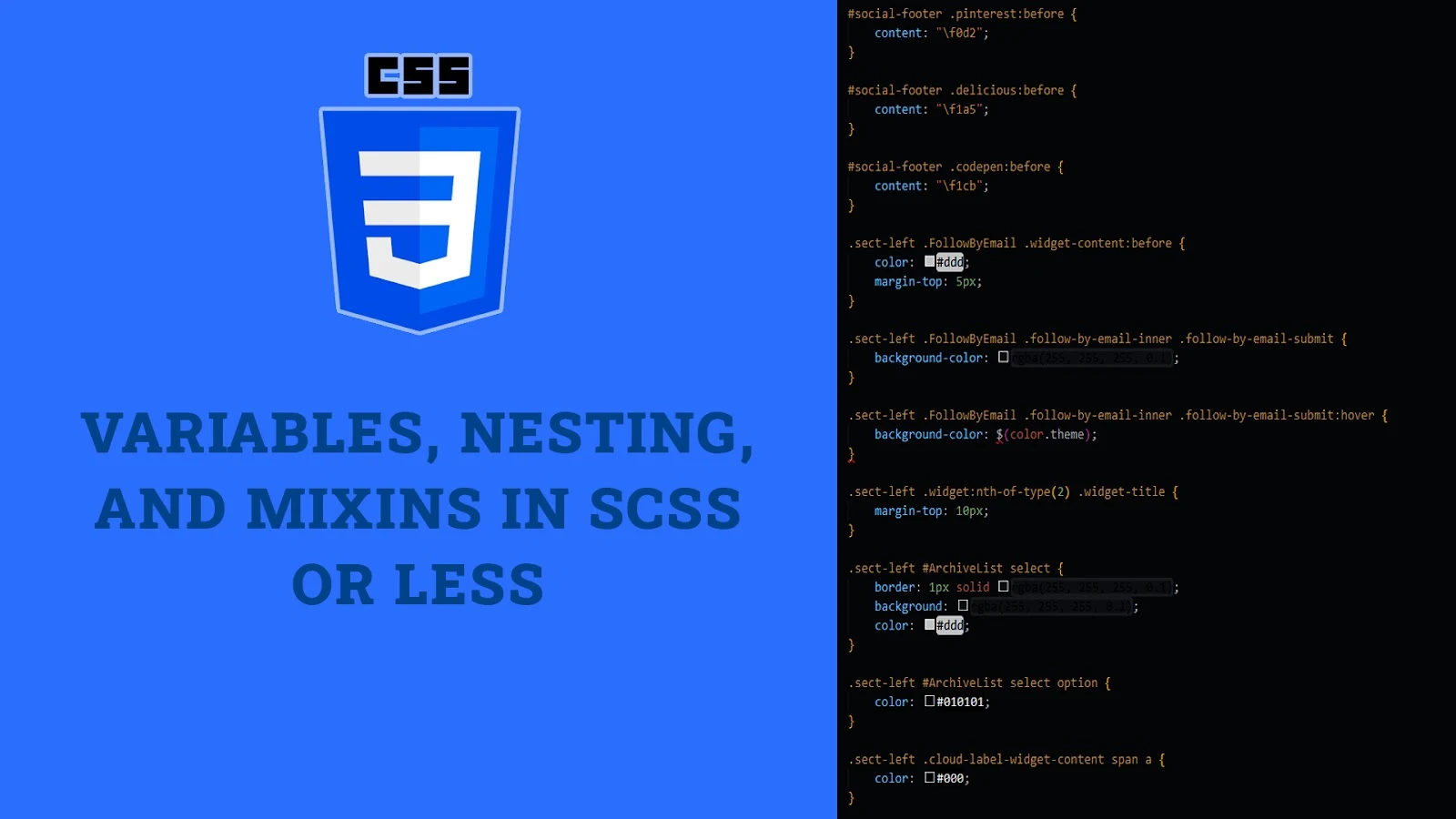Using variables, nesting, and mixins in SCSS (SASS) or LESS can greatly enhance the maintainability and scalability of your stylesheets. These features allow you to write cleaner, more modular CSS, making it easier to update and manage. In this article, we will explore how to use variables, nesting, and mixins in SCSS and LESS, with detailed examples and explanations.
Variables
Variables allow you to store values in a single place and reuse them throughout your stylesheet. This makes it easier to manage and update your CSS, as changes to a variable will be reflected wherever it is used.
Example in SCSS:
$primary-color: #3498db;
$padding: 10px;
.button {
background-color: $primary-color;
padding: $padding 20px;
}Example in LESS:
@primary-color: #3498db;
@padding: 10px;
.button {
background-color: @primary-color;
padding: @padding 20px;
}Nesting
Nesting allows you to nest CSS selectors in a way that follows the structure of your HTML. This makes your CSS more readable and easier to manage, as it reflects the hierarchical structure of your document.
Example in SCSS:
.nav {
background-color: #333;
ul {
list-style: none;
li {
display: inline-block;
a {
color: #fff;
text-decoration: none;
}
}
}
}Example in LESS:
.nav {
background-color: #333;
ul {
list-style: none;
li {
display: inline-block;
a {
color: #fff;
text-decoration: none;
}
}
}
}Mixins
Mixins allow you to create reusable chunks of CSS that can be included in other rulesets. They are particularly useful for defining common styles or CSS functions that you want to use throughout your stylesheet.
Example in SCSS:
$primary-color: #3498db;
@mixin button-styles($color: $primary-color) {
background-color: $color;
color: #fff;
padding: 10px 20px;
border: none;
border-radius: 5px;
}
.primary-button {
@include button-styles;
}
.secondary-button {
@include button-styles(#e74c3c);
}Example in LESS:
@primary-color: #3498db;
.button-styles(@color: @primary-color) {
background-color: @color;
color: #fff;
padding: 10px 20px;
border: none;
border-radius: 5px;
}
.primary-button {
.button-styles;
}
.secondary-button {
.button-styles(#e74c3c);
}Fun Facts and Little-Known Insights
- Fun Fact: Sass, the preprocessor that SCSS syntax belongs to, was first released in 2006, making it one of the oldest and most mature CSS preprocessors available.
- Insight: Variables in SCSS and LESS not only simplify theming but can also be used for complex calculations and dynamic styling, making your CSS both powerful and flexible.
- Secret: Mixins can accept arguments, enabling even more customization and reuse across your stylesheets, making your code DRY (Don't Repeat Yourself) and maintainable.
Conclusion
In this article, we explored the powerful features of variables, nesting, and mixins in SCSS (SASS) and LESS. These features enable you to write cleaner, more modular CSS, making it easier to maintain and update your stylesheets. By using variables, you can store reusable values, while nesting allows you to structure your CSS in a way that mirrors your HTML. Mixins provide a way to create reusable CSS rules, making your code more efficient and maintainable. Understanding and leveraging these features can significantly improve your workflow, making your CSS more scalable and easier to manage.
 Reviewed by Curious Explorer
on
Sunday, December 08, 2024
Rating:
Reviewed by Curious Explorer
on
Sunday, December 08, 2024
Rating:




No comments: